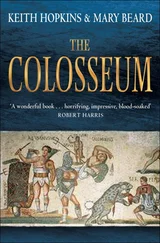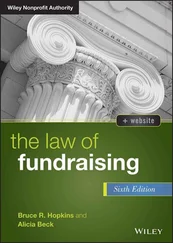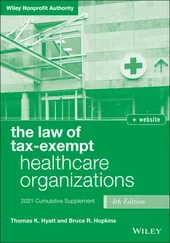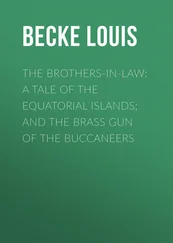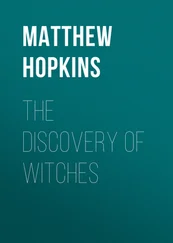Bruce R. Hopkins - The Tax Law of Charitable Giving
Здесь есть возможность читать онлайн «Bruce R. Hopkins - The Tax Law of Charitable Giving» — ознакомительный отрывок электронной книги совершенно бесплатно, а после прочтения отрывка купить полную версию. В некоторых случаях можно слушать аудио, скачать через торрент в формате fb2 и присутствует краткое содержание. Жанр: unrecognised, на английском языке. Описание произведения, (предисловие) а так же отзывы посетителей доступны на портале библиотеки ЛибКат.
- Название:The Tax Law of Charitable Giving
- Автор:
- Жанр:
- Год:неизвестен
- ISBN:нет данных
- Рейтинг книги:5 / 5. Голосов: 1
-
Избранное:Добавить в избранное
- Отзывы:
-
Ваша оценка:
- 100
- 1
- 2
- 3
- 4
- 5
The Tax Law of Charitable Giving: краткое содержание, описание и аннотация
Предлагаем к чтению аннотацию, описание, краткое содержание или предисловие (зависит от того, что написал сам автор книги «The Tax Law of Charitable Giving»). Если вы не нашли необходимую информацию о книге — напишите в комментариях, мы постараемся отыскать её.
The Tax Law of Charitable Giving — читать онлайн ознакомительный отрывок
Ниже представлен текст книги, разбитый по страницам. Система сохранения места последней прочитанной страницы, позволяет с удобством читать онлайн бесплатно книгу «The Tax Law of Charitable Giving», без необходимости каждый раз заново искать на чём Вы остановились. Поставьте закладку, и сможете в любой момент перейти на страницу, на которой закончили чтение.
Интервал:
Закладка:
35 35McGlotten v. Connally, 338 F. Supp. 448, 456 (D.D.C. 1972).
36 36Green v. Connally, 330 F. Supp. 1150, 1162 (D.D.C. 1971), aff'd sub nom. Coit v. Green, 404 U.S. 997 (1971).
37 377 Id., 330 F. Supp. at 1162. In a situation where a partnership intended to make $4.75 million in charitable contributions but the gifts were, due to a clerical error, made by means of a business corporation's checks and the matter was corrected, a court refused to uphold the IRS's disallowance of the deduction, declaring that “[t]o disallow a charitable deduction simply because of a clerical error goes against the liberal policy of encouraging charitable giving” (Green v. United States, 2016 WL 552964 (W.D. Okla. 2016)). Likewise, Green v. United States, 2015 WL 1482508 (W.D. Okla. 2015), rev'd on other ground, 880 F.3d 519 (10th Cir. 2017).
38 38H. Rep. No. 1860, 75th Cong., 3d Sess. 19 (1939).
39 39Department of the Treasury, Proposals for Tax Change, Apr. 30, 1973.
40 40Report of the Commission on Private Philanthropy and Public Needs: Giving in America—Toward a Stronger Voluntary Sector at 9–10 (1975).
41 41Friendly, “The Dartmouth College Case and the Public-Private Penumbra,” 12 Tex. Q. (2d Supp.) 141, 171 (1969). Two other prominent sources are Rabin, “Charitable Trusts and Charitable Deductions,” 41 N.Y.U. L. Rev. 912 (1966); Saks, “The Role of Philanthropy: An Institutional View,” 46 Va. L. Rev. 516 (1960).
42 42Fink, “Taxation and Philanthropy—A 1976 Perspective,” 3 J. Coll. & Univ. L. 1, 6–7 (1975).
43 43Gardner, “Bureaucracy vs. The Private Sector,” 212 Current 17–18 (May 1979).
44 44Id. at 17.
45 45Id. at 18.
46 46Henle, “The Survival of Not-for-Profit, Private Institutions,” America, Oct. 23, 1976, at 252.
47 47O'Connell, America's Voluntary Spirit (New York: The Foundation Center, 1983).
48 48Id. at xi.
49 49Id. at xv.
50 50Id. at 81.
51 51Id. at 131.
52 52Id. at 162.
53 53Id. at 256.
54 54Id. at 278.
55 55Id. at 356.
56 56Id. at 368.
57 57Id. at 371.
58 58Id. at 408.
59 59The congressional budget and tax committees and the Department of the Treasury measure the economic value (revenue “losses”) of various tax preferences, such as tax deductions, credits, and exclusions (termed tax expenditures). The federal income tax charitable contribution deduction tends to be the sixth- or seventh-largest tax expenditure.
60 60In general, Pappas, “The Independent Sector and the Tax Law: Defining Charity in an Ideal Democracy,” 64 S. Cal. L. Rev. 461 (Jan. 1991).There is another rationale for tax exemption, known as the inherent tax rationale. See Tax-Exempt Organizations § 1.5. The essence of this rationale is that the receipt of what otherwise might be deemed income by a tax-exempt organization is not a taxable event, in that the organization is merely a convenience or means to an end, a vehicle whereby those participating in the enterprise may receive and expend money collectively in much the same way as they would if the money were expended by them individually. Although this rationale is not followed in the charitable organizations setting, it chiefly underlies the tax exemption for organizations such as social clubs, homeowners' associations, and political organizations.
61 61See Tax-Exempt Organizations ch. 14.
62 62Id. § 16.1.
63 63U.S. Department of the Treasury, Report to the Congress on Fraternal Benefit Societies, Jan. 15, 1993.
64 64See supra note 60.
65 65See text accompanied by infra notes 76–79.
66 66See Tax-Exempt Organizations § 19.11(a).
67 67Id. § 24.10, text accompanied by note 947.
68 68Id. § 19.14.
69 69Id. § 11.5.
70 70Id. § 11.4.
71 71Id. § 11.6.
72 72Id. § 8.8.
73 73Id. § 11.3.
74 74Id. § 19.17.
75 75Hansmann, “The Role of Nonprofit Enterprise,” 89 Yale L.J. 835, 896 (1980).
76 76Id. at 844.
77 77Id. at 847.
78 78Id. at 845.
79 79Id. at 843.
80 80Pierce v. Society of Sisters, 268 U.S. 510 (1925); Meyer v. Nebraska, 262 U.S. 390 (1923).
81 81Zablocki v. Redhail, 434 U.S. 374 (1978); Quilloin v. Walcott, 434 U.S. 246 (1978); Smith v. Organization of Foster Families, 431 U.S. 816 (1977); Carey v. Population Serv. Int'l., 431 U.S. 678 (1977); Moore v. East Cleveland, 431 U.S. 494 (1977); Cleveland Bd. of Educ. v. LaFleur, 414 U.S. 632 (1974); Wisconsin v. Yoder, 406 U.S. 205 (1973); Stanley v. Illinois, 405 U.S. 645 (1972); Stanley v. Georgia, 394 U.S. 557 (1969); Griswold v. Connecticut, 381 U.S. 479 (1965); Olmstead v. United States, 277 U.S. 438 (1928).
82 82Runyon v. McCrary, 427 U.S. 160 (1976).
83 83Roberts v. United States Jaycees, 468 U.S. 609 (1984).
84 84Rent Control Coalition for Fair Housing. v. Berkeley, 454 U.S. 290 (1981).
85 85Boy Scouts of America et al. v. Dale, 530 U.S. 640 (2000); NAACP v. Claiborne Hardware Co., 458 U.S. 886 (1982); Larson v. Valente, 456 U.S. 228 (1982); In re Primus, 436 U.S. 412 (1978).
86 86Brown v. Socialist Workers '74 Campaign Committee, 459 U.S. 87 (1982); Democratic Party v. Wisconsin, 450 U.S. 107 (1981); Buckley v. Valeo, 424 U.S. 1 (1976); Cousins v. Wigoda, 419 U.S. 477 (1975); American Party v. White, 415 U.S. 767 (1974); NAACP v. Button, 371 U.S. 415 (1963); Shelton v. Tucker, 364 U.S. 486 (1960); NAACP v. Alabama, 347 U.S. 449 (1958).
87 87Roberts v. United States Jaycees, 468 U.S. 609 (1984).
88 88Id. at 622–629.
89 89Id. at 625. In general, see Tax-Exempt Organizations § 1.7; Hopkins, Tax-Exempt Organizations and Constitutional Law: Nonprofit Law as Shaped by the U.S. Supreme Court (Hoboken, NJ: John Wiley & Sons, 2012) § 1.9.
90 90“The rapid growth of the nonprofit sector in the last half century has led to greatly increased attention from the media, scholars, the government, and the public.” O'Neill, Nonprofit Nation: A New Look at the Third America 34 (San Francisco: Jossey-Bass, 2002) (Nonprofit Nation).
91 91Report of the Commission on Private Philanthropy and Public Needs: Giving in America—Toward a Stronger Voluntary Sector (1975).
92 92See text accompanied by infra note 126.
93 93The most recent version of this almanac is Wing, Pollak, & Blackwood, The Nonprofit Almanac 2008 (Washington, DC: The Urban Institute Press) (Nonprofit Almanac).
94 94Nonprofit Nation.
95 95These annual publications of this organization are titled Giving USA.
96 96The IRS publishes various editions of the Statistics of Income Bulletins.
97 97E.g., Yearbook of American and Canadian Churches (National Council of the Churches of Christ in the United States of America, various editions); Foundation Giving: Yearbook of Facts and Figures on Private, Corporate and Community Foundations (The Foundation Center, various editions); Foundation Management Report (Council on Foundations, various editions). The American Hospital Association publishes statistics concerning hospitals; the National Center for Education Statistics publishes data on independent colleges and universities; and the American Society of Association Executives publishes information concerning the nation's trade, business, and professional associations. There are several other analyses of this nature.
98 98Indeed, there is little uniformity as to this term. See text accompanied by supra note 7.
99 99That is, organizations that are tax-exempt pursuant to IRC § 501(a) because they are described in IRC § 501(c)(3) (see Tax-Exempt Organizations pt. 3).
100 100That is, organizations that are tax-exempt pursuant to IRC § 501(a) because they are described in IRC § 501(c)(4) (see Tax-Exempt Organizations ch. 13). This definition of the independent sector is in the 2002 edition of the Nonprofit Almanac at 7–8. Today, the Nonprofit Almanac does not attempt a definition of the sector but instead surveys the “nonprofit landscape” (Nonprofit Almanac at 3–5).
Читать дальшеИнтервал:
Закладка:
Похожие книги на «The Tax Law of Charitable Giving»
Представляем Вашему вниманию похожие книги на «The Tax Law of Charitable Giving» списком для выбора. Мы отобрали схожую по названию и смыслу литературу в надежде предоставить читателям больше вариантов отыскать новые, интересные, ещё непрочитанные произведения.
Обсуждение, отзывы о книге «The Tax Law of Charitable Giving» и просто собственные мнения читателей. Оставьте ваши комментарии, напишите, что Вы думаете о произведении, его смысле или главных героях. Укажите что конкретно понравилось, а что нет, и почему Вы так считаете.


